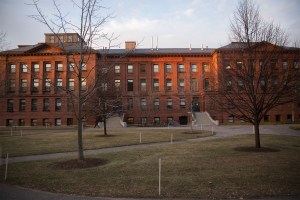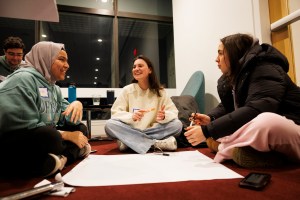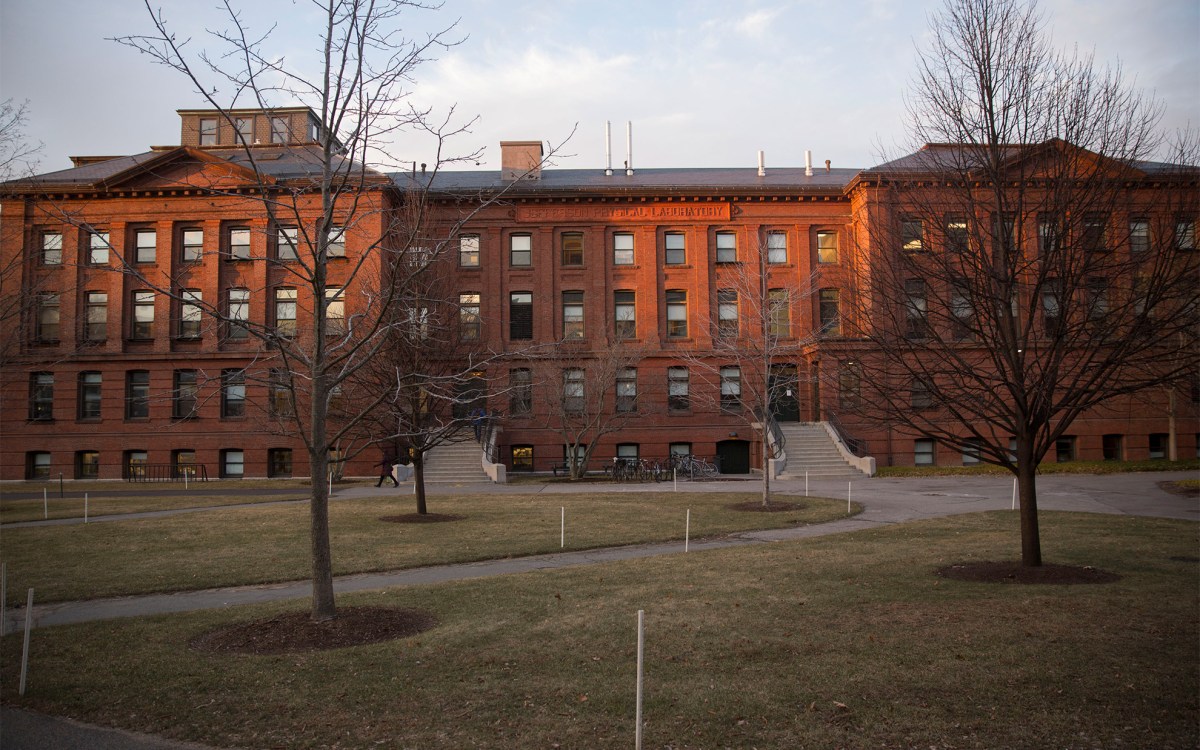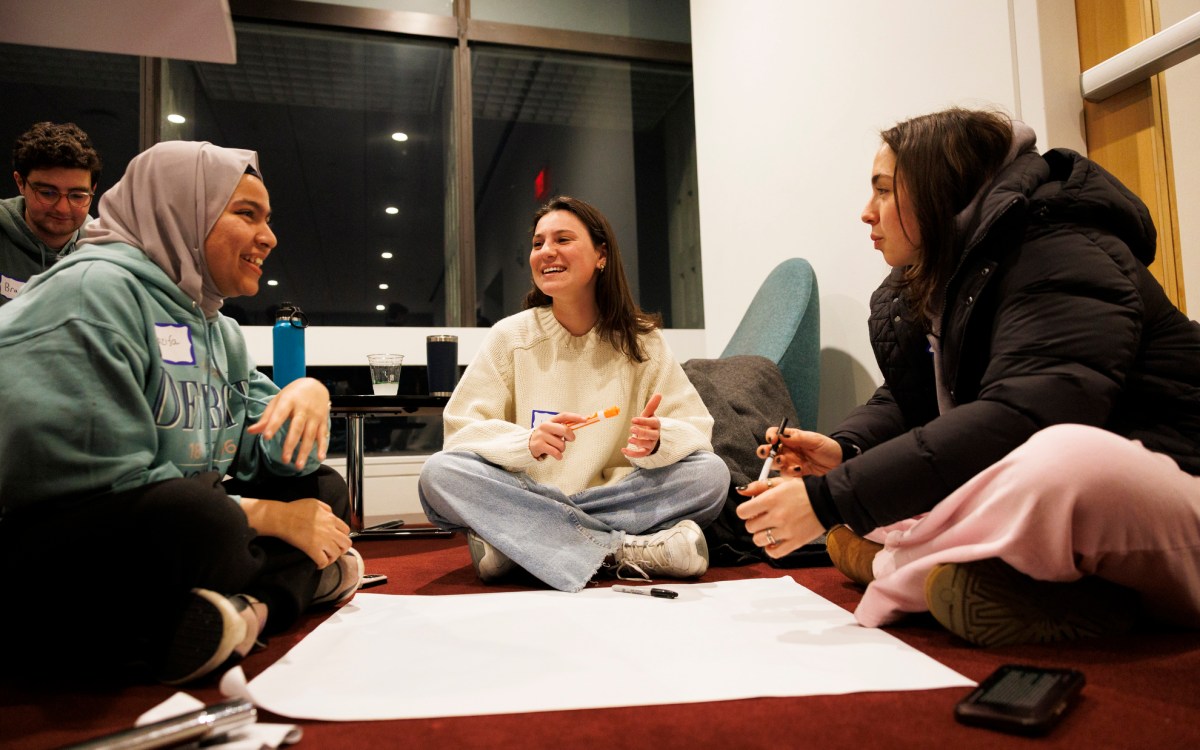Straus Center team finds Holy Grail
Painstaking work reveals beauty behind grime-obscured murals at the BPL
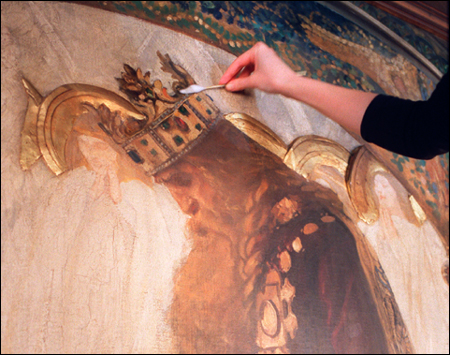
It’s no wonder Sir Galahad can’t find the Holy Grail.
His search, chronicled in Edwin Austin Abbey’s murals that ring the once-opulent Abbey Room at the Boston Public Library, is obscured beneath a century of city grime. The room’s windows, flung open during 109 summers, invited in pollution and train soot from the busy warm Copley Square streets below, darkening Abbey’s murals so that even the gilt halos of angels are muddy.
Thanks to a team of conservators from Harvard’s Straus Conservation Center, however, the Holy Grail is finally becoming visible to Sir Galahad – and to the many visitors to the Boston Public Library (BPL), who will soon be able to enjoy
See video of the conservation effort: Real/Quicktime
Learn more about the Straus Center for Conservation
Read about the art and architecture of the Boston Public Library
the room’s refurbished splendor. The Straus Center, which recently completed a restoration of the BPL’s celebrated John Singer Sargent murals, has been working alongside other contractors dedicated to returning the room to its original glory, from its gold-leaf ceilings to the rich oak paneling and extravagantly carved marble fireplace to the Italian marble floors.
“This is one of the most beautiful rooms in the library, in my opinion,” says Teri Hensick, paintings conservator for the Straus Center, which provides analysis and treatment to the collections of the Harvard University Art Museums and, occasionally, outside clients like the BPL. “Because of the amount of grime, I think people began to forget what is here.”
Working from a temporary office and lab beneath scaffolding in the Abbey Room, the Straus Center team won’t soon forget the 15 murals depicting the quest for the mythic grail from the birth of Sir Galahad through his presentation of the grail by angels. Abbey, an American painter who shared a studio with the better-known Sargent in England, painted the murals on canvas there; like the Sargent murals, they were fastened to the BPL’s walls much like wallpaper, using a technique called marouflage.

Cleaning and restoring the murals involves equal parts art, science, and plain old elbow grease. To remove the dirt and the coating of wax that was likely once applied to the murals, assistant paintings conservator Kate Smith Maurer leads a team of three conservators in a multistep cleaning process alternating an aqueous solution of trisodium citrate with mineral spirits. No Brillo pads or scrub brushes here; rather, the team dabs and scours the yards-long murals with cotton swabs.

In some spots, the conservators practice what they call consolidation of flaking paint. “We have to put glue behind each flake of paint and reattach it,” Maurer says. “It slows us down a little.” Not surprisingly, the project is anticipated to last at least four months.
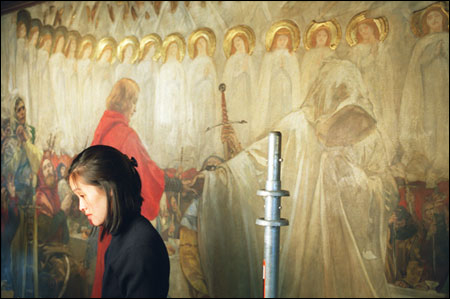
In addition to the Abbey and Sargent murals, the Straus Center team has returned the luster and magic to other murals and artwork around the BPL’s historic McKim Building – the Puvis de Chavannes paintings along the grand staircase, damaged by an accidental steam leak in the early 1990s; the ceiling mural by Boston artist John Elliott; the Pompeian and Venetian lobbies on the second floor.

“This is one of the best buildings in Boston in terms of painting and sculpture. It’s an extraordinary gem,” says Hensick, adding that architect Charles Follen McKim envisioned the library as a house of art as well as books. “It would be like all the top artists of the day coming to do a little decorating,” she adds. “I don’t think it happens today.”

